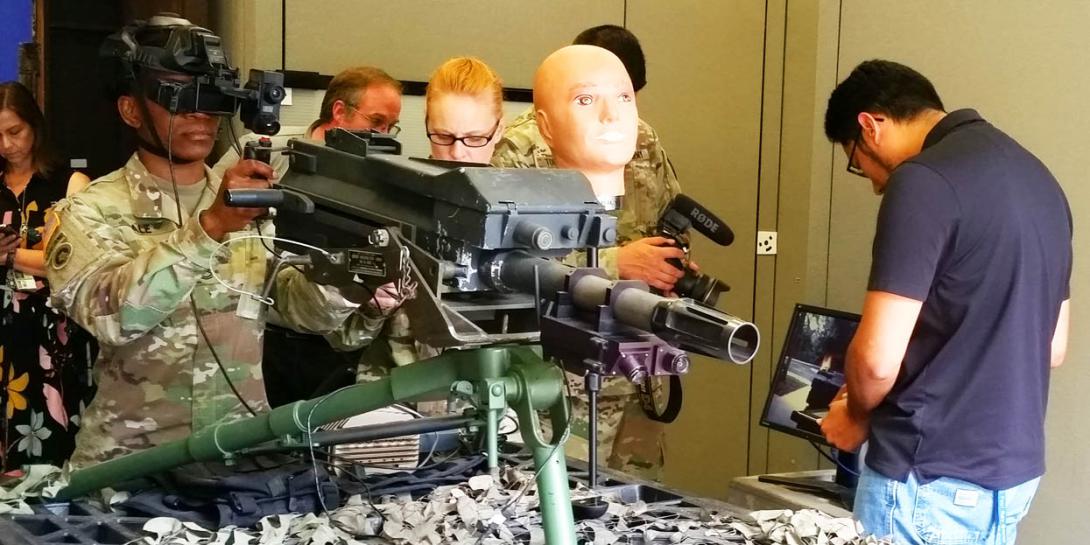ARL Developing Virtual Trainer for Grenade Launcher
The Army Research Laboratory (ARL) is creating a virtual MK-19 trainer that will help shorten training set-up time and decrease ammunition costs, according to the Army. Researchers at the ARL in Orlando, Florida, are merging the weapon with existing hardware and software algorithms to create a training experience that blends real-time vision with virtual reality.
Once it is ready for full use in the field, the training platform will help soldiers expedite training on the weapon.
The concepts proven by the MK-19 trainer represent “the future of training for soldiers,” said Dean Reed, software developer and team lead at the ARL in Orlando.
With real grenades, soldiers need to reserve range time, travel to the range, find available range cadre, set up a range field that requires long distances and use expensive ammunition rounds.
With the augmented grenade launcher trainer, soldiers need only 25 meters to perform the testing. They can practice in an ordinary parking lot—instead of a range—and need less than 30 minutes to set up.
"The accessibility this gives you is dramatic," Reed said. "You don't have to go sign out the expensive equipment and have a whole organized day. Usually there are range officers involved and safety officers. Here, you can literally just go to the motor pool, open the high bay door and get tracking."
To create the system, the researchers added a tablet computer to the MK-19 and head-mounted display (HMD) goggles equipped with video cameras, which stand in for the soldier's eyes.
Liquid-crystal display (LCD) modules in front of the soldier's eyes, in addition to the cameras, help blend what the soldiers actually see with additional virtual elements provided by the computer. Such a system will allow operators to build custom scenarios on which the soldiers can train.
So far the testers have pointed the system out a garage door at the rear of their facility, focusing on a parking lot. Soldiers can see the actual lot, in addition to virtual images of a moving truck or an enemy soldier generated by the tablet computer.
The soldier can look down at the weapon and the trigger, look back up at the parking lot and see an indicator projecting where the grenade might land. The indicator moves when the soldier moves the weapon, the Army said.
Then, when firing the MK-19, the soldier can hear computer-generated sounds of a virtual round, and if on target, can see the truck exploding or the enemy combatant fall.
To reload, the soldier just “clicks on the tablet,” Reed said. “That short reset time gives soldiers as many repetitions on the weapon as needed before going out to the real range and firing the weapon for real. That means soldiers get the confidence and skill they need for less money.”
The biggest challenge, the researchers said, was getting the computer to accurately combine the direction of the weapon, the virtual trajectory of the grenade and the correct visuals to the soldier to make it all seem real.
"It's really the computer vision algorithms that merge the real world with the virtual world," Reed said. "It's kind of a mixed-reality system. That's the hard bit, getting that orientation and realistic projection of those models, in the real world."
To get the MK-19 trainer field ready, the researchers will continue to work on the HMD system. The application works well indoors, but outdoors in bright light it does not work as well, Reed said.
"The HMD are not really bright enough to handle all the timing conditions that we are going to see," he said.





Comments